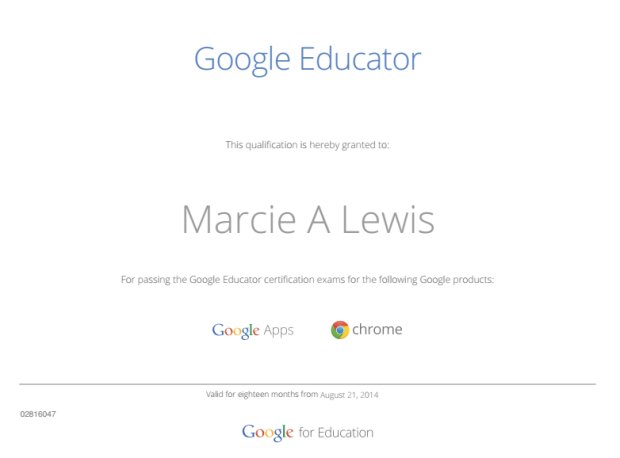This weekend I had the opportunity to attend the Ontario Google (GAFE) Summit in Kitchener. I think I might have been one of the only people from a non-GAFE school/board but I was still able to learn many things that I can apply to my teaching practice (another blog post!). For me, I try to make technology integration not about the technology but a focus on maintaining strong pedagogy and utilizing the tools to allow us to reach beyond what is possible without its use. Over the weekend listening to many of the other educators talk, I couldn’t help but thinking about why GAFE was such a powerful tool when mass adoption in an organization takes place. I also developed a greater understanding of how GAFE can enhance teachers ability to hit the sweet spot in the TPACK framework .
Here are a couple of the strengths I identified:
(1) Everyone speaking the same language – Having a common ‘toolkit’ allows all teachers to speak the same language in terms of their technological knowledge (TK). There are still ways to customize the toolkit through the use of add-ons and 3rd party tools; however, the core set of tools provides amazing flexibility and adaptability across K-12 (+higher ed) and subject area. As everyone is familiar with the same tools, teachers can ‘collaborate’ and assist each other, sharing their knowledge and ideas, strengthening the technological knowledge. With greater technological knowledge, teachers are better able to see where technology can be selected to work together with their pedagogical knowledge and content knowledge.
(2) Workflow – The GAFE suite makes distributing and collecting student work a streamlined process, but it also allows teachers to observe students ‘during’ the learning and can help shift the focus from being solely on the product of the learning but also to the process of the learning. With the ability to monitor and support students throughout the learning process, the teachers role can shift to being a facilitator and guider of the learning process, rather than the keeper of knowledge (pedagogical knowledge). This is not to suggest that it is not possible to do this without the use of GAFE because of course it is; however, it could require a greater level of technological knowledge to ‘hack’ other tools to preform similar functions and be more time consuming to monitor.
(3) Enhanced Assessment Capabilities – With the shift to monitoring the process of learning, the GAFE suite has a number of built in tools that allow for teachers to provide timely and effective feedback throughout the learning process. The ability to provide ‘comments’ and have students respond to the comments while they are working, allows for personalized feedback without the student having to ‘hand-in’ their work, the teacher sitting down to look over all of the tasks, and then waiting until the next time they see the student to return the work. Another function that is beneficial to the assessment process is the ‘revision history’. This is particularly useful if you are looking at shared-documents where students are working in groups and you can see each members contributions, or if you are looking at how students are able to apply feedback and make changes to their work. In terms of TPACK, having more formative assessment information during the process of learning allows the teacher to identify concepts that students are having difficulty with and better match their ‘content’ with the students needs.
(4) Takes the focus away from the technology – This kind of seems silly but I actually think that when students and teachers are using a common toolkit and develop fluency with the tools the focus of the learning doesn’t need to be the technology. I personally thinking, that often the sweet spot in TPACK is reached when the focus is not on the technology but on the harmonious blending of the technology, the content, and the pedagogy. Currently, I find that I have to spend a lot of time teaching the tools that I have selected for my students to use because they have often not used them in previous grades. Although students today are fast learners, and often figure out things that I didn’t even know were possible, it still takes time and shifts the focus away from our other learning. With GAFE, the toolkit can become a ubiquitous part of their learning environment instead of an add-on.
What other reasons have you found that make GAFE a powerful toolkit in your organization?
What drawbacks have you found to GAFE?
